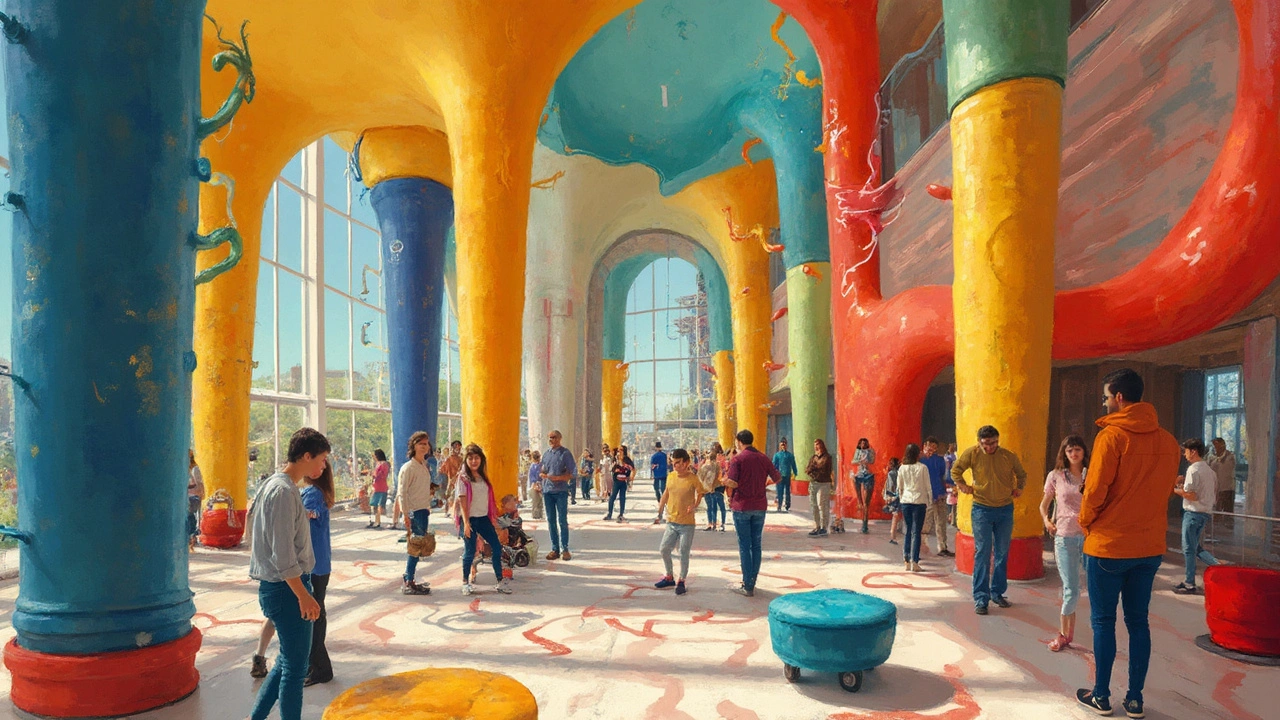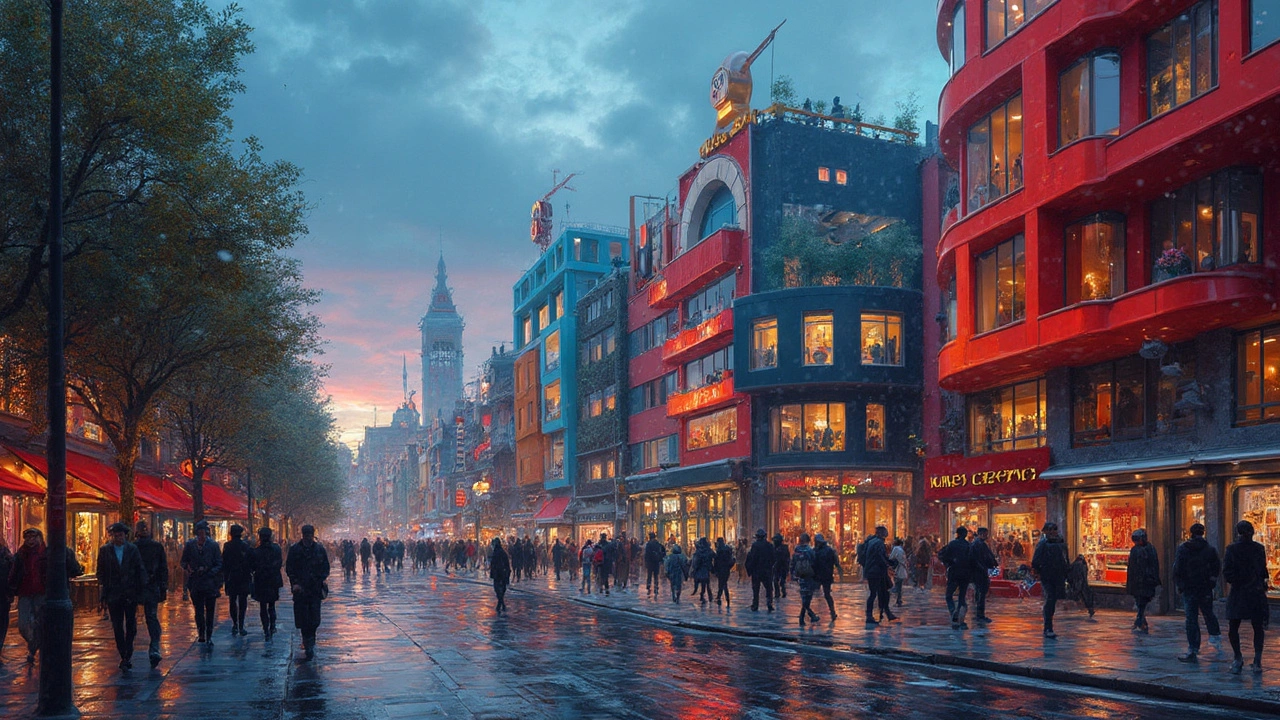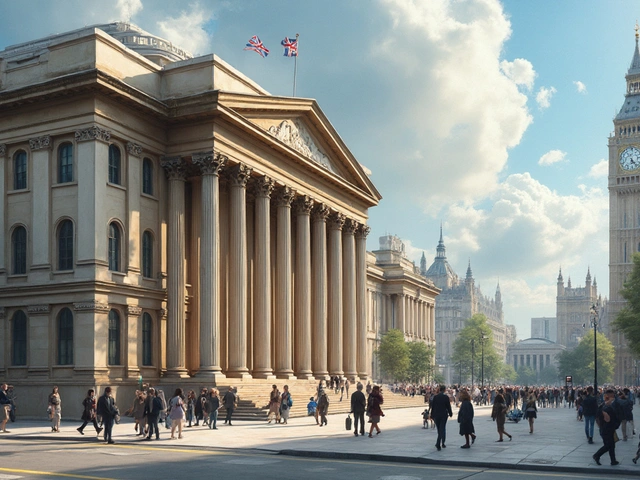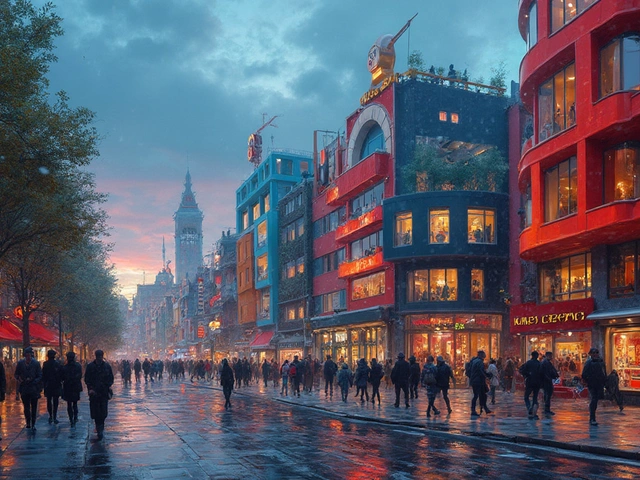Ever wonder why some buildings look like they're having way more fun than the rest? From jagged forms to pops of color that seem to laugh at straight-laced skyscrapers, postmodern architecture feels like it’s giving the finger to boring boxes. But what is it really about? Here’s what you need to know to truly get postmodern architecture—no dry lectures, just the facts, quirks, and why people love (or hate) it.
- Postmodern architecture ditches strict rules and embraces playful, diverse styles.
- It's known for mixing historic references with modern twists and bold details.
- Famous examples include buildings by Frank Gehry and Philip Johnson.
- It’s shaped city skylines and sparked constant debate in the design world.
- There are practical design lessons, as well as a few pitfalls, to learn for anyone interested in architecture or design.
What Makes Postmodern Architecture Tick?
Back in the 1970s, architects started getting restless. They’d spent decades tied up in the rules of modernism—think plain walls, no ornaments, just clean function. Then rebellion clicked in. Postmodern architecture exploded as a response. Forget “less is more.” Postmodernism goes for “more is more.” It pulls inspiration from all over: Roman columns next to glass walls, pink zigzags next to gray slabs, classical details one floor and wild angles the next.
Instead of hiding structure, postmodern buildings show off their personality. This style asks: Why stick to perfectly tidy lines when you could add a twist or an arch just for the heck of it? Robert Venturi summed up the spirit with “complexity and contradiction.” In other words, postmodernism is about breaking the rules—with style.
Postmodern architecture blends bits of the past, the present, and a splash of bold humor. A single building might look like it’s wearing a tuxedo top and sneakers on the bottom. If you’re walking through a city and suddenly spot a building that seems to wink at you or show off, that’s probably postmodernism’s handiwork.
The Signature Moves: Spotting a Postmodern Building
So, how can you tell you’re staring at a postmodern creation? Look for these signature moves:
- Mash-ups of Old and New: These buildings riff off history—Greek columns, arches, domes—then mash them with new materials and outrageous colors.
- Ornament and Wit: Modernism ditched ornaments as “unnecessary.” Postmodernism brings them back—sometimes with a wink, sometimes ironically. Gargoyles and neon signage? Sure.
- Fragmented Shapes: You’ll find sharp angles, unexpected corners, cut-outs, and odd layering—often refusing to mirror left and right sides.
- Color Pops: Not afraid of teal, pink, or gold. In fact, these colors show up to break the gray monotony.
- Playful Forms: Sometimes, buildings feel like giant sculptures—think of dancing towers or buildings shaped like everyday objects.
Classic examples? The Piazza d'Italia in New Orleans by Charles Moore looks like a part-ruin, part-stage set with gold trim and neon. Closer to home in Dallas, you’ll see quirky additions and mashups on plenty of 1980s towers.
Meet the Masters: Architects and Buildings That Define the Movement
If postmodern architecture was a rock band, these are the lead singers:
- Robert Venturi: His book “Complexity and Contradiction in Architecture” basically rewrote the rules. His Vanna Venturi House looks nothing like the boxy houses around it, brandishing a fake arch and mismatched windows like badges of honor.
- Michael Graves: Known for the Portland Building—a crazy quilt of teal tiles, overblown keystones, and pop-art columns. People either love its wacky colors or grumble about the leaky windows.
- Philip Johnson: Pulled a prank with his AT&T Building in New York. Its ‘Chippendale’ top looks like it belongs on a giant cabinet, not a skyscraper. But it made a statement and influenced dozens of copycats.
- Frank Gehry: Upped the ante with metallic, crumpled forms—like the Walt Disney Concert Hall in Los Angeles—mixing playfulness with engineering guts.
These buildings aren’t shy. They want you to notice them. You can find their DNA in city skylines all over the United States—especially in places like Dallas, Houston, and Portland, where pushing boundaries became part of the local vibe.
How Postmodern Architecture Reshaped Cities and Culture
So what did all this wild design mean for ordinary folks and the way we use our buildings? First, postmodernism made architecture a water-cooler topic. People started debating buildings, making jokes, even feeling proud (or deeply embarrassed) about the weirdest ones in town.
City planners liked postmodern designs because they stood out—great for branding neighborhoods or making public squares lively again. Downtown Dallas, for one, went from a sea of glass boxes to funky towers sporting geometric hats, grand staircases, and pastel trim during the postmodern boom.
Retailers and businesses jumped in. The playful, approachable feel of postmodern architecture helped hotels, stores, and museums say, “We’re not just about business—we want you to stop and look.” Museums, especially, used quirky postmodern themes to pull people back inside.
But it wasn’t all gold and glitter. Some postmodern buildings—like the Portland Building—struggled with leaky walls and oddball interiors. The focus on looks sometimes meant less attention to daily function. And while ornament turned many heads, it didn’t always age well as tastes changed.

Postmodern Architecture in Practice: Lessons, Pitfalls, and Smart Takeaways
Thinking about using a postmodern twist for your own project—maybe a studio, a café, or even a family home? Here’s what the last 50 years have taught architects, designers, and anyone picking paint or window shapes:
- Know Your Neighborhood: Postmodern design grabs attention, but can clash hard if surrounded by quieter styles. Balance is key, unless you want to make a statement—sometimes being the “odd duck” is the point, but know the risks.
- Function First: Don’t let style bury useability. Theoretical flourishes are fun, but if people can’t find the front door or the roof leaks, they won’t care how clever the design references are.
- Think Timeless and Playful: Small nods to history or bright details can bring life to a space. Avoid pastiche (copying for copying’s sake) and find authentic ways to mix old and new, especially with local references.
- Materials Matter: Postmodernism loves bold, unusual materials—but quality counts. Cheap plastic or tile can look funky at first and dated by the next decade, while stone, brick, or real metals tend to age with more grace.
- Keep the Details in Check: It’s easy to go overboard with color and shapes. The best postmodern buildings know when to stop, giving your eye a place to rest amid the fireworks.
If you’re hunting for inspiration or want to learn from postmodernism’s stumbles and successes, grab a city map and pick out the oddest buildings on the skyline. That’s often where the real architectural stories begin.
Comparisons and Handy Checklists: Modernism vs. Postmodernism
| Modernism | Postmodernism |
|---|---|
| “Less is more” Minimal ornament Straight lines Function above all Monochrome palettes | “More is more” Decorative touches Irregular shapes Plays with history and humor Pops of color |
- Quick Postmodern Design Checklist:
- Is there a playful or ironic twist in the design?
- Do elements from different eras mingle?
- Are colors bolder than average?
- Is there a sense of whimsy, surprise, or humor?
- Is the function still clear and practical?
Mini-FAQ: Real Talk on Postmodern Architecture
- Is postmodernism dead? Not really. While fewer new buildings go full postmodern, the style’s mix-and-match spirit is alive in today’s “anything goes” design trends.
- Why do some people hate postmodern architecture? For every fan, there’s a critic who says it’s too gimmicky, busy, or doesn’t ‘fit in’—but that was partly the point!
- Are there famous examples in Dallas? Absolutely. Look at Fountain Place and the colorful risers sprinkled across downtown and Uptown from the late 20th century.
- What’s the biggest lesson from postmodernism? Don’t be afraid to question rules, but respect the basics: comfort, use, and community.
Next Steps: Where to Go From Here
- If you’re an architecture student: Head out and sketch the quirkiest building near you. Analyze what rules it breaks and how it functions anyway.
- Homeowners or renovators: Look at adding a dash of postmodern play—maybe a pop of color on the front door or an unexpected pattern in your entryway.
- City explorers: Put together a postmodern walking tour in your town. There’s always a hidden gem or oddity to find—snap some pics, share the stories.
- Future designers: Pull lessons from both the fun of postmodernism and the clarity of modernism. Hybrid is in.
Next time you see a building that makes you pause—or even laugh—remember, architecture isn’t just about shelter. Sometimes it’s about shaking up the street, sparking a grin, or reminding us not to take blank walls too seriously.





